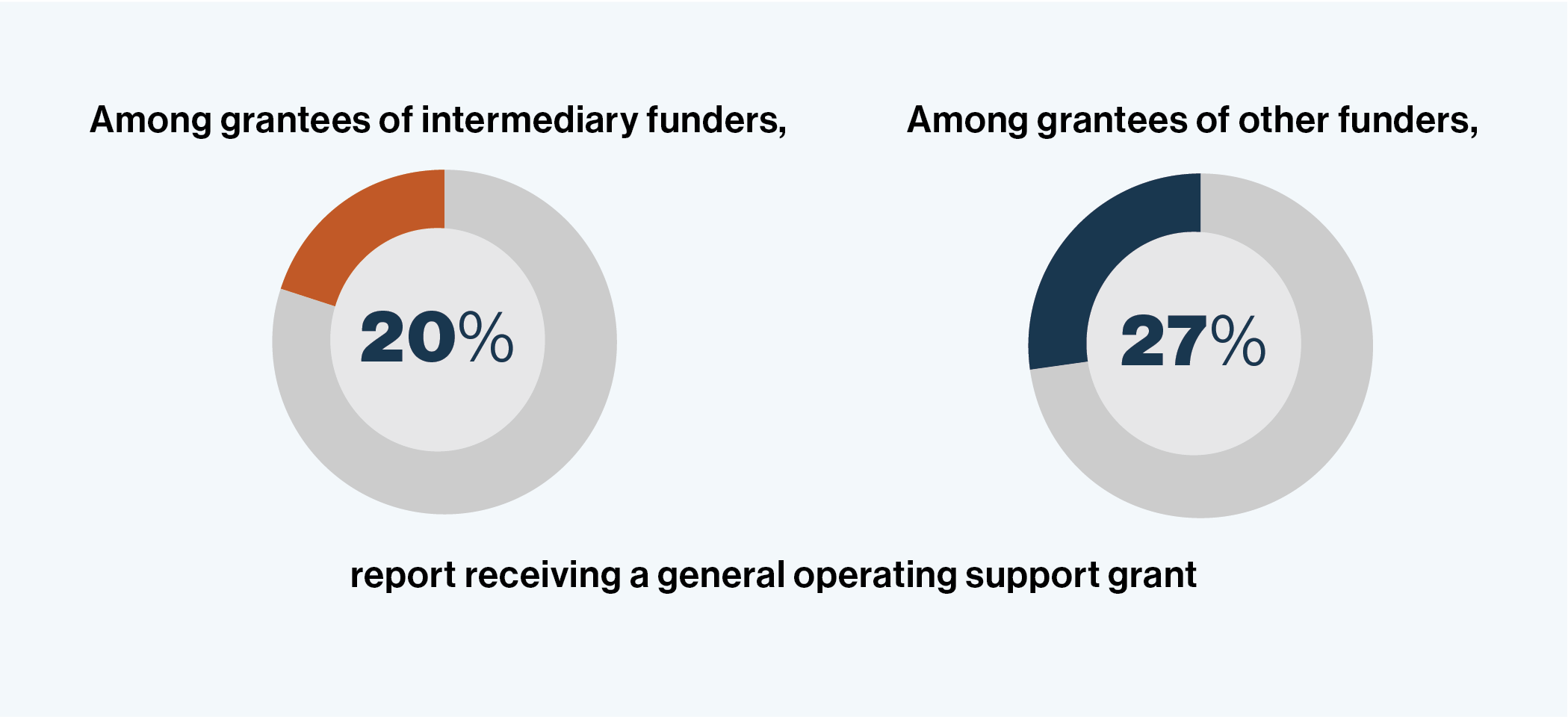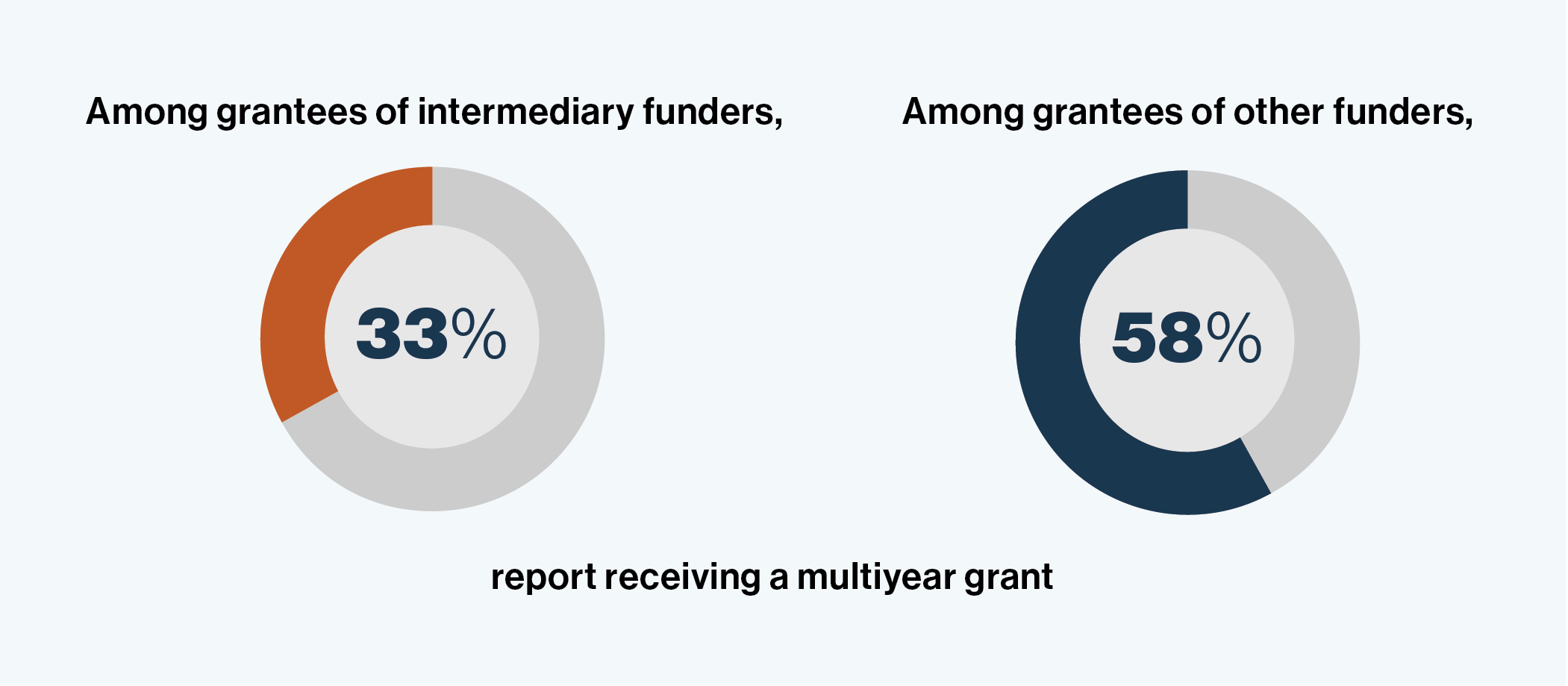BRIDGING THE GAP:
Grantee Perspectives
on Intermediary Funders

Overview
Intermediaries – a term which refers to many kinds of entities that are regrantors of philanthropic dollars – have been the subject of increased support and attention in recent years. While there has been much discussion about why funders may choose to use intermediaries, relatively little is known about the experience of those funded by intermediary organizations.
Our research aims to explore:
We surveyed
0
grantees of
0
intermediary funders
In total 62,138 grantees from 364 funders were surveyed.
Bridging the Gap:
Grantee Perspectives on Intermediary Funders
This work represents the largest study of grantee experiences with intermediary funders to date and raises important considerations for intermediaries and originating funders alike, as both groups have much to gain from ensuring that intermediaries are as strong as they can be in their work with grantees. Our hope is that this research generates an open, honest conversation about what it takes to create excellent intermediary funder-grantee experiences across the philanthropic sector.
Intermediaries remain a major topic of interest and research. For more research on intermediaries, see upcoming reports from Bridgespan on governance structures and Arabella Advisors on grantee experiences with pooled funds.
If this report has been helpful to you, please consider supporting CEP’s research. Reach out to us for more information. Thank you.
WEBINAR VIDEO
Recorded October 15, 2024
Bridging the Gap: Grantee Perspectives on Intermediary Funders













